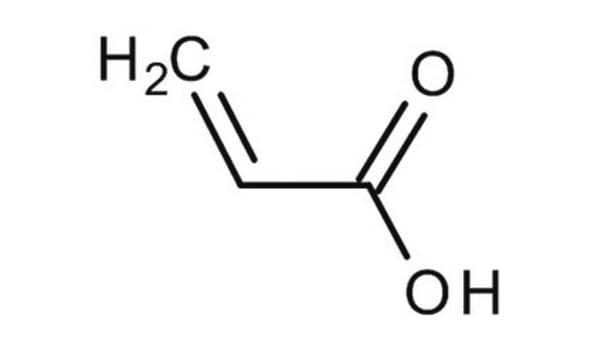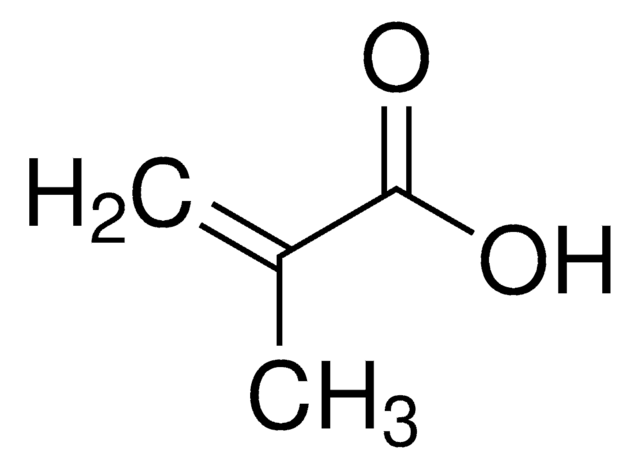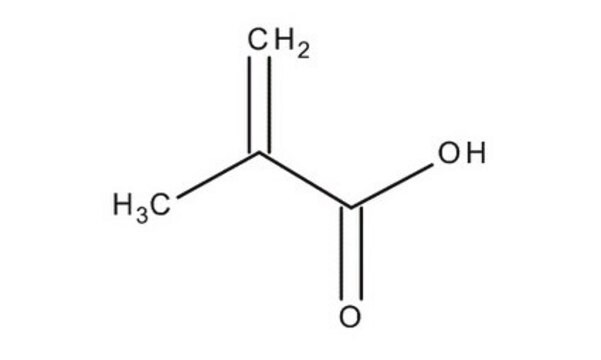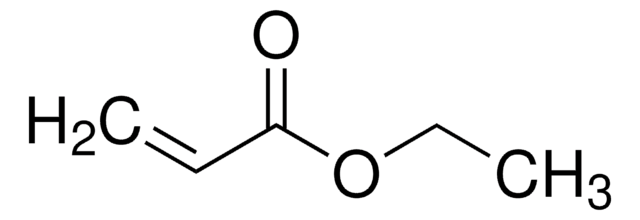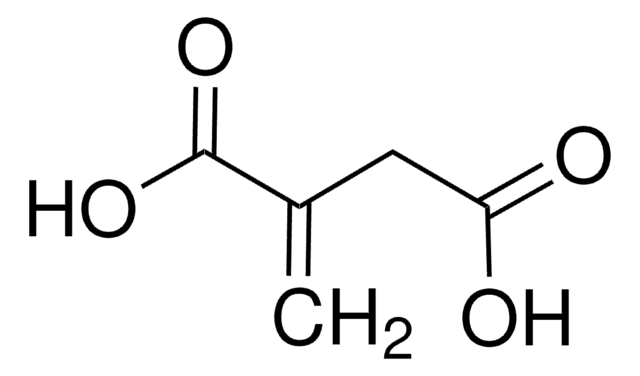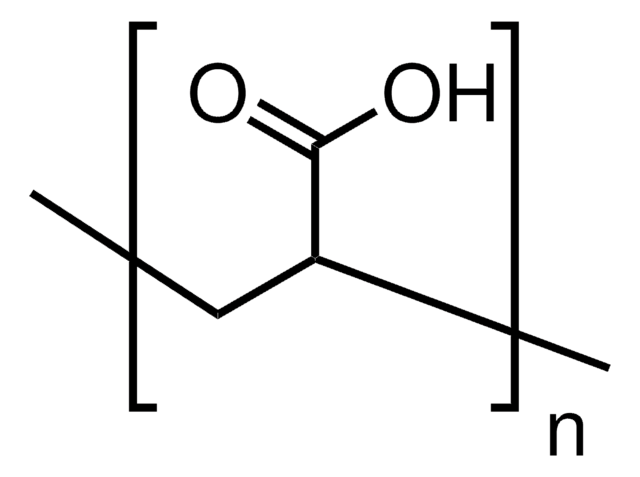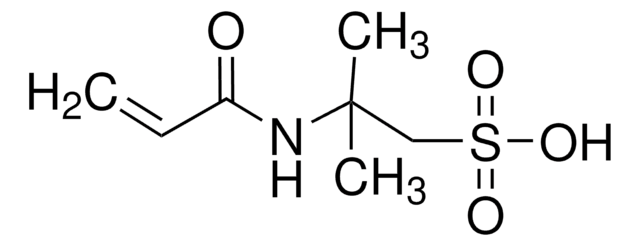Kluczowe dokumenty
147230
Acrylic acid
anhydrous, contains 200 ppm MEHQ as inhibitor, 99%
Synonim(y):
2-Propenoic acid
About This Item
Polecane produkty
klasa czystości
anhydrous
Poziom jakości
200
300
gęstość pary
2.5 (vs air)
ciśnienie pary
4 mmHg ( 20 °C)
Próba
99%
Formularz
liquid
temp. samozapłonu
744 °F
zawiera
200 ppm MEHQ as inhibitor
granice wybuchowości
13.7 %
bp
139 °C (lit.)
mp
13 °C (lit.)
gęstość
1.051 g/mL at 25 °C (lit.)
ciąg SMILES
OC(=O)C=C
InChI
1S/C3H4O2/c1-2-3(4)5/h2H,1H2,(H,4,5)
Klucz InChI
NIXOWILDQLNWCW-UHFFFAOYSA-N
Szukasz podobnych produktów? Odwiedź Przewodnik dotyczący porównywania produktów
Powiązane kategorie
Opis ogólny
Zastosowanie
Acrylic acid can also be used as:
- A key component in the preparation of copolymer binder, which helps to optimize the performance of lithium-ion batteries.
- A surface modifier for the carbon nanotubes with poly(acrylic acid) in order to improve adhesion and dispersion of the nanotubes in the oxide semiconductor matrix for thin-film transistor applications.
- A reactive monomer for the surface modification of polydimethylsiloxane (PDMS)through a simultaneous polymerization process with ethylene glycol dimethacrylate. Modified PDMS potentially applied in new applications fields such as microfluidics or biomedical devices.
- A precursor for the synthesis of cashew gum/acrylic acid nanoparticles via the copolymerization process. The use of acrylic acid in the synthesis is to introduce hydrophilic functional groups into the cashew gum backbone, thereby improving its solubility in water and increasing its compatibility with other hydrophilic materials.
Hasło ostrzegawcze
Danger
Zwroty wskazujące rodzaj zagrożenia
Zwroty wskazujące środki ostrożności
Klasyfikacja zagrożeń
Acute Tox. 3 Dermal - Acute Tox. 4 Inhalation - Acute Tox. 4 Oral - Aquatic Acute 1 - Aquatic Chronic 2 - Eye Dam. 1 - Flam. Liq. 3 - Skin Corr. 1A - STOT SE 3
Organy docelowe
Respiratory system
Kod klasy składowania
3 - Flammable liquids
Klasa zagrożenia wodnego (WGK)
WGK 2
Temperatura zapłonu (°F)
119.3 °F - closed cup
Temperatura zapłonu (°C)
48.5 °C - closed cup
Środki ochrony indywidualnej
Faceshields, Gloves, Goggles, type ABEK (EN14387) respirator filter
Wybierz jedną z najnowszych wersji:
Masz już ten produkt?
Dokumenty związane z niedawno zakupionymi produktami zostały zamieszczone w Bibliotece dokumentów.
Klienci oglądali również te produkty
Produkty
RAFT (Reversible Addition Fragmentation chain Transfer) polymerization is a reversible deactivation radical polymerization (RDRP) and one of the more versatile methods for providing living characteristics to radical polymerization.
By altering the physicochemical properties, smart or intelligent drug delivery systems can be designed to deliver therapeutic molecules on-demand. Learn more about the application of stimuli-responsive materials in drug delivery.
Innovation in dental restorative materials is driven by the need for biocompatible and natural-appearing restoration alternatives. Conventional dental materials like amalgam and composite resins have inherent disadvantages.
Protokoły
HPLC Analysis of Acrylamide and Acrylic Acid on Discovery® HS F5
Nasz zespół naukowców ma doświadczenie we wszystkich obszarach badań, w tym w naukach przyrodniczych, materiałoznawstwie, syntezie chemicznej, chromatografii, analityce i wielu innych dziedzinach.
Skontaktuj się z zespołem ds. pomocy technicznej